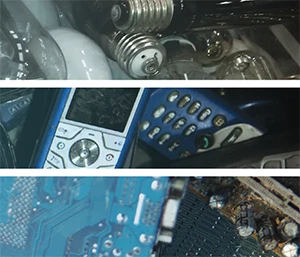
Eventually these once pricey and “in-demand” EEE get handed over to electronic waste (e-waste) haulers.
The United Nations University (UNU) calculates that about 46 million tons of e-waste was generated globally in 2014, according to a recent study. Although these devices are an essential part of our daily modern life, the societal impact of e-waste can be severe if the e-waste is not managed according to proper waste management standards.
For example, if the e-waste is treated without the necessary care, the e-waste handlers – and in the developing world, this would be working women and children – are exposed to toxic substances.
In Africa and Asia, there are many examples of large e-waste dumpsites, but from where and how exactly the e-waste gets there, is not officially documented. In developed countries, large flows of undocumented e-waste may be treated or processed with inferior standards.
Needless to say, the environment is also adversely affected.
While this is a growing problem on a global scale, individual countries do not have a uniform measurement or an indicator for e-waste. However, a number of both developed and developing countries have already started to collect substantial data that relate to e-waste statistics.
In an effort to set uniformity and cross-country data standards, the UNU recently announced a measurement framework that was proposed by the Partnership on Measuring Information Communications and Technology (ICT) for Development. Partnership members include the International Telecommunications Union (ITU), the United Nations Conference on Trade and Development (UNCTAD), the World Bank Group, among others.
This partnership/UNU-led task group is currently working on integrating and validating harmonized statistical data and other non-statistical data sources into e-waste statistics. The framework captures the most important elements of e-waste disposal scenarios around the world. A full overview of partnership’s methodology can be found in these guidelines.
Although the classification of e-waste is, at this stage, standalone, it links to multiple data sources and data formats, such as the Harmonized Commodity Description and Coding System (HS) and the European Union Waste of Electric and Electronic Equipment (EU WEEE) Directive reporting.
The parameters in the measurement framework and the classification function serve as a backbone for data gathering and thus enable the measurement of these flows.

These e-waste indicators would be able to provide a useful overview of a specific country’s electronic and electrical products market. For policymakers, the indicators would provide key data on expanding e-waste figures and insightful trends on e-waste’s environmental impact.
We'll keep you posted on the release and the availability of these indicators. Stay tuned. And in the meantime, please submit your thoughts or questions in the comments field below.



Join the Conversation